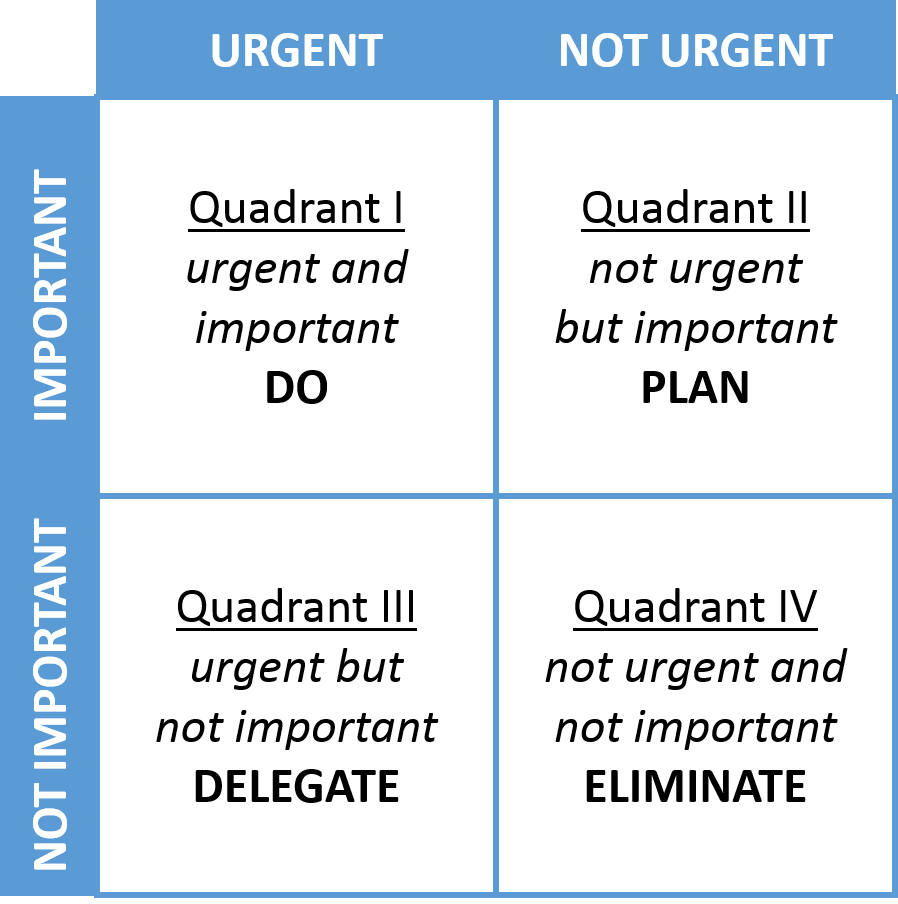Mastering Time Management: Tips and Strategies for Solo Entrepreneurs

Being a solo entrepreneur offers the freedom and creative autonomy that you simply cannot get from a traditional career, but this independence also comes with more significant responsibilities. From brainstorming your next product update or negotiating a new contract all the way to answering emails and filing taxes, there are simply only 24 hours in a day—no matter how hard we try.
Dedicated time management lets you take anything off of your ever-growing to-do list with a minimal reduction in the overall quality of your work. Read on to discover strategies, tips, and insights to help yo

The Challenge of Time Management for Solo Entrepreneurs
Time is wonderful, scarce, a healer, valuable, a manacle, and all around us. As much as we’d like time to be on our side whenever we nee, building a successful business takes up valuable time making it our most important—and simultaneously dispensable—resource. Every day comes with a full of big challenges, and it’s much harder for solo entrepreneurs to manage time efficiently when everything comes down to them.
Since teamwork is non-existent and other business functions—from human resources to filing taxes—are often the responsibilities of the solo entrepreneur, budgeting out time strategically is already high-stakes enough. Once you factor in time-consuming tasks like vendor negotiation and client communication—among many other things—the occasions where it feels like there simply aren’t enough hours in the day to get everything we need done become more and more common.
Instead of trying to be everywhere, consider these solo entrepreneur-specific time management tips to keep your business operations efficient and effective without compromising your personal life:
- Automate mundane tasks: Embracing automation accelerates your systems, streamlines operations, and empowers your business to be more efficient than ever before.
- Set specific goals and prioritize tasks accordingly with the 3 Es: Clearly defining expectations, evaluating commitments, and establishing evaluation criteria help makes day-to-day tasks more manageable.
- Prioritize income goals over time-consuming tasks: An entrepreneur’s most important commodity outside of time is cash—after all, no cash means no business. Minimize operational expenses and focus on bringing in more cash via efficient cohort management and optimized service delivery.
Prioritization Techniques: Identifying What Really Matters
One of the best ways to avoid feelings of being overwhelmed is by keeping everything in perspective thanks to time management and prioritization techniques. When you’re the sole driver steering the ship, efficiency becomes the difference between eventual success and substantial failure. These are the most effective time management and prioritization techniques for solo entrepreneurs to consider:
Stephen R. Covey’s Time Management Matrix: Understanding Urgent Versus Important
Seven Habits of Highly Effective People author Stephen R. Covey is one of the most recognizable figures in time and self-management . Solo entrepreneurs can start managing their most productive days by determining how important urgent and important tasks are to them and their business.

Source: BrianTracy.comTime management in this system all comes down to how solo entrepreneurs balance spending the necessary amount of time working focused on business-building activities versus simply responding to urgent requests from various stakeholders. Although it is near impossible to achieve the ideal state of not having any quadrant 1 responsibilities because of the nature of urgent and essential tasks, there are a few ways to mitigate their impacts, like:
- Build a consistent block of distraction-free work time per day
- Build more efficient processes and systems
- Address recurring quadrant 1 activities head-on through customer support scripting, resources for recurring questions or tasks, and more.
Managing quadrant 1 is often left for crisis management, but taking a few moments to actively manage this section will equate to hours of working productively and limit time wasted like constantly putting out fires in the future.
Knowing the difference between “just in time” tasks versus “just for me” requests is why establishing a system to categorize different types of work and their importance is vital for time management. As important as it is obvious, the critical unconscious step in using Stephen R. Covey’s time management matrix to manage time comes from separating the true from non-important. While immediate value is often derived from urgent activities, it likely isn’t a long-term benefit so be cautious of which tasks make it into your urgent/important versus non-urgent/important box.
Solo entrepreneurs achieve maximum productivity by educating themselves on how to evade crises in the future by addressing important tasks before they run out of time rather than simply reacting to them as they pop up. When considering quadrant two overall, the following are strategies to balance putting out fires and stoking new ones:
- Feasible means tasks can be completed in a reasonable amount of time.
- Valuable means falling in line with the goals and objectives of the business.
- Actionable means the task is clearly defined to easily be checked off the list.
- Time-bound means tasks are associated with a deadline.
This breakdown of identifying what’s quite important versus moderately important helps solo entrepreneurs take square ownership of their businesses in the path for growth, balance, and, potentially, to foster free time.
There will come a point in which time won’t be enough, and knowing where to spend it will continue to be one of the largest challenges to conquer while running your business. Another technique for solo entrepreneurs to consider using to better understand time is Parkinson’s Law which dictates that work expands to fill the time available for its completion.
Parkinson’s Law puts managing deadlines at the helm of managing time, as doing so effectively allows for almost immediate improvements in productivity. By having complete control of your working time, solo entrepreneurs can search for ways to increase the quality, efficiency, and velocity of work which will in turn reduce business operating expenses.
With day-to-day tasks already consuming the majority of days for many solo entrepreneurs, it simply doesn’t make sense to force squeezing extra work into an already bloated day. Instead, you should systematically reduce current available time which forces you to tangentially change the way you work from a quantitative, rather than qualitative, point of view.
Let’s say out of the three hours you have to dedicate to creating an email adventure for your e-commerce business, you end up only sending a total of 2 hours and 45 minutes working even though you had much more treadmill-time in you. This tells you a few things: nothing other than email activities and attending to bodily functions requires your immediate attention and can be tabled for later and you’re naturally a time waster.
How can you compress that fluff-filled 15 minutes to spend more time focusing on what truly matters? Cutting it out is the fastest way, and identifying which areas to nix outright is largely done by your prioritization efforts. Asking yourself the hard questions—who, what, when, where, why, and how unlocked the full potential of the available three hours, but an extra productive 150 minutes wielding a sharper focus is the same outcome that can be reached in a time-efficient but creative effective mail in a fraction of the time.
Make sure you are working at least reasonably diligently in our remaining time instead of wasting it, and after rinsing and repeating this cycle for a couple days, you will naturally become more productive thanks to better decision making in relation to what truly requires your immediate attention.
Questions are your friends in this game. Start off by writing a list of the steps required to complete the project in question and eventually create a top three of priorities that you can use like a guiding light. Group intent behind the activities on your to-do list into larger focused projects and give yourself some flexible time to ease any time management discomfort for moving comfortably between tasks during the workday so you always remain critical of your overall time.

Tools and Apps to Boost Your Productivity
Being a productive solo entrepreneur is nothing short of challenging, but it’s tough for anyone to argue that you don’t spend the necessary time required to get things right. As you improve your ability to intelligently and strategically manage each 24-hour window, you’ll also begin seeing measurable progress on your personal effectiveness, staff productivity, and, potentially, in the bottom-line success of your e-commerce business.
Consider the following time management tools and apps to get a little extra help in a couple of critical areas for solo entrepreneurs.
Growing Your Business’s Digital Presence
With every passing day, the importance of developing and maintaining a digital presence on the Web for your e-commerce business increases. More small businesses are delaying their digital transformations in addition to freebie websites expiring—they suddenly become billable without warning.
Tools and Apps for Time-Strapped Solo Entrepreneurs
Surviving your first six to 12 months of operation is a formidable toughness test for any entrepreneur, and given that most people wear their founder and CEO hats at the same time, solo entrepreneurs may face choking out other tasks simply to dust off each item in their 24-hour toolbox as efficiently as possible.
Hootsuite, for example, simplifies social media management for solopreneurs by unifying various social media operations and executions in a single place. Alongside Hootsuite, Gusto streamlines all things payroll and integrates it into essential benefits from a simple and intuitive self-service platform. Helping your e-commerce platform thrive will be _SocialBook_ through improving communication, increasing collaboration, and capturing one seamless and unified work item tracking system.
The Pomodoro Technique
Professionally marketing your new e-commerce company is going to be a time-consuming effort no matter how you slice it, and if you aren’t ready to be flexible with chunks of time that get rolled into weeks that eventually become a knit of several months, you may want to reconsider the entire space.
While many entrepreneurs treat the pomodoro technique as a completely optional play in the business management playbook, many have taken it upon to entirely embrace it which has lead to acknowledging the merits of the value of time while simultaneously enjoying significantly more guaranteed free time.
Four 25-minute work periods coupled with three 5-minute rest periods comprise a single round under the pomodoro technique, with a 15 to 20-minute break once a full round lasts roughly 1 hour as required by this super simplistic productivity methodology. The underlying pomodoro concept is stuck rooted in time blocking, which requires entrepreneurs to work on a single assigned task with the singular expectation of completing it.

Time blocking tasks tend to be greasy, slippery at times, and difficult to pinpoint which is why the pomodoro technique is sharpened by taking careful time of recording everything you do. Just pick up an old-fashioned notepad, write down the task you want to complete with the aforementioned 25-minute work window followed by the 5-minute break, then set up four rounds of the basic work-rest block with each pomodoro iteration underlined on the piece of paper.
Setting Realistic Goals and Deadlines
The ability to reach a business goal hinges on more than maximizing tasks and properly delegating them across a (hopefully) efficient team. Even the best laid plans fall apart if the business falls victim to milestones which many businesses continue to set-even then despite their inherently flawed nature.
It is imperative for solo entrepreneurs to measure the truth louring behind each of your business’s goals and objectives as they relate to the long-term prospects of the business financially. Most companies see growth in proportional terms, but simply identifying that a problem exists is usually only when it impacts future performance.
Understanding the normal, predictable, or seasonal variations with relevant internal metrics will help identify which triggers need to be pulled once the time comes to act rather than a reactive approach. This is valuable for solo entrepreneurs because setting aside time to prioritize your efforts around those highly relevant well-defined short-term objectives, your team can focus most of their time driving improvements that leverage the true power of solo entrepreneurs, specialists, artists, and specific Metrics-Digital teams.
Understanding SMART Objectives
Altering metrics to align with your business goals makes it possible to seamlessly identify the events that matter as they matter in differing time increments—from daily to yearly.
Many solo entrepreneurs already have known of SMART—specific, measurable, achievable, relevant, time-based—objectives through educating themselves on them, but perhaps not ready to abdicate their implicit expectations and align them through gaining a deeper understanding of the company’s available resources. Start your education on this topic by asking the Inc-led question “what can my team and I both do to achieve a goal in due time?”
To reiterate, the entire point of setting SMART company objectives is to gain focus and energy resources through balance. Fine-tuning and clarifying which goals that business objectives link up the best is also a critical for understanding business goals in relation to the more immediate objectives, the how you plan to get there to advance your business model overall.

SMART objectives are widely used in business education/teaching, task management, project planning, performance appraisals, and personal development coaching too—among many other things.]
Identifying which whole numbers objectives can pass the smart test is simpler when measured against these common examples:
- Staff member engagement score of at least excellent on the Electrocorp best place to work survey
- Streamline all client communication efforts through the creation and annual update of our Holy Grail of client-focused correspondence form
Like a good old-fashioned parent teacher meeting back in the day, solo entrepreneurs should also have a standard question they can immediately address with a member of their staff at any time:
- How is this objective helping us achieve the following short-term financially-driven goals: 0% revenue growth month-on-month aimed to achieve spend less than the average comparable amount with some of our most efficient client engagements this month?
Business goals that are unknown and unmetive stop distracting otherwise well-intentioned employees from completing meaningless tasks WSoftware also software could be accomplishing a larger, more purposeful imperative. Goals that comply with SMART:
- Meaningful
- Satisfying
- Engaging
- Defensible
Avoiding Burnout: Balancing Work and Personal Time
Time is always of the essence in the business world, and Google search trends for terms like “hustle culture” emphatically confirm the always-on nature to balance the ebb and flow of our professional and personal time. In fact, hustle culture and burnout frequently go hand in hand and were ultimately thrown into the national lexicon through a deep dive by Vox in 2019—mostly due to a very vocal social media following of high-profile entrepreneurs Justin Jackson, DHH, Dan Benjamin, and Brad Strokes of the Basecamp debacle respectively.
Despite LinkedIn leveraging the teachings of ancestors with over 1,000 years of groundwork aback that stretches to their network professional graph, everybody starts to witness at least a relative break around the holiday season.
As one of the hottest keywords and phrases of the present day, and keeping in mind that we are amidst the COVID-19 era, this trend is healthier and far more unsurprising that initial health so-and-so to eventually survive the pandemic.
“It is important to make disciplined use of available time.”
It doesn’t seem like the hustle culture has very much steam, but Entreprenuer warns that burnout is a very real and critical danger facing the current sociopolitical and economic landscape. By avoiding a slippery slope into burnout territory, there are a few alternative approaches solo entrepreneurs and their teams can adopt to help folks disconnect when the working day ends.
The most important and difficult question to answer is figuring out what truly merits immediate attention within the work environment. Although close knit and meaningful, family, social obligation and work-related pressures such as internal meetings and external client-facing chores still tend to form a straight-up heave on your mindset to consistently produce high-quality work. While identifying how you and your team should be spending its time isn’t easy, the more time and commitment that is put into this question, the sooner everyone will have an easier time tightening up its strategic focus on the core tasks that mean the most to you, your business, and your team.
Hold irregular lunchtime team meetings
Simply setting aside time during the workday to disconnect for 30 minutes or an hour can be the difference between a burnout and success for everyone.
Institute a genuine closed-door policy
This is something that the individual employee has the decision to activate at their discretion. A closed-door policy, whether literally or virtually behind a status icon, simply notifies co-workers and clients that an employee is actively in focus mode and is unavailable during work hours as a response to non-urgent messages—even though they are slowly improving by the day.
Encourage your workforce to leave work promptly at 5 p.m.
Solo entrepreneurs are the unofficial cheerleader of successfully protecting the right to disconnect, and they will naturally serve as the catalyst for the rest of the team to get on board with minimal motivation. This may seem counter-intuitive if you’re the only one making this a priority, but the team will inevitably produce and higher quality of work by not falling victim to burnout thanks to seeing the importance of work-life balance.
Note: Productivity is often cyclical, and some business areas are inherently busier during some time periods which can be managed through how effective your individual components are.
By completely disconnecting from the work landscape, your future on-call work can be more productive and more closely tread up against the belt of your preferred work day and priority spectrum.




